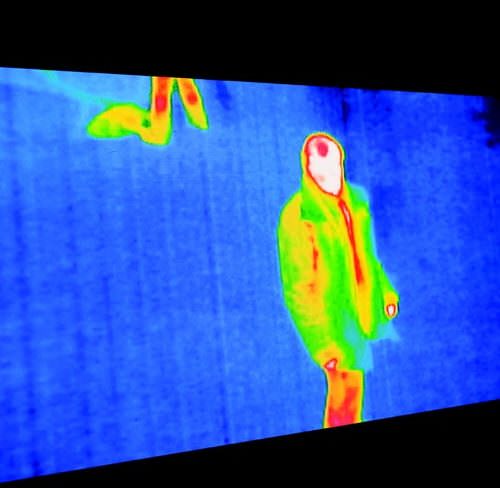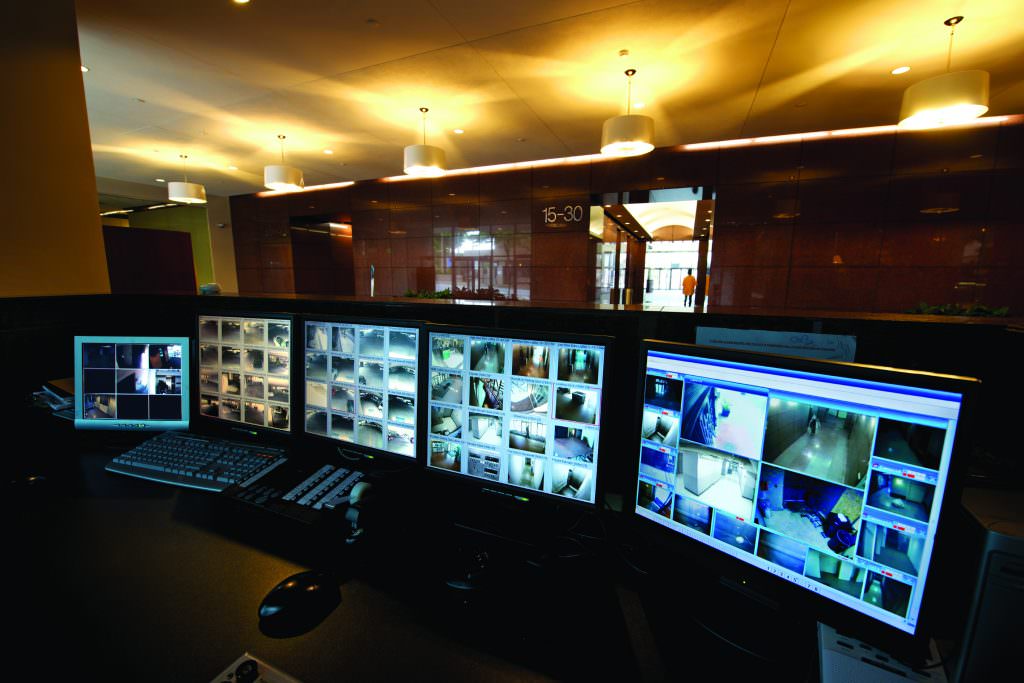Surveillance in the 21st Century

Smart, 3-D, 360-degree cameras that see in the dark are on the way

Jumbi Edulbehram, Oncam Grandeye
The constantly evolving security industry has experienced some significant shifts in technology offerings in the last decade – from server-driven storage to cloud-based solutions, from analog to IP, and much more – and these advances often lead to the question, what’s next?
End user organizations are leveraging technology to address issues in numerous vertical markets where security is paramount, including critical infrastructure, transportation, health care, government, education, retail and manufacturing. As more and more businesses and organizations identify the risks posed by outside threats, they seek out the latest and greatest technologies to help mitigate the danger.
Cameras with increasingly higher resolution and higher frame rates have flooded the market. However, improvements in resolution and frame rates are not the only technology trends that will influence the future of IP camera technology.
Camera as a System
IP cameras with the capability to run a video management system (VMS) are making their way to the marketplace, delivering powerful features to customers. Processing power in the cameras is increasing dramatically, and only a small percentage of the total processing power available is necessary to support video capture and transmission. Therefore, companies are finding other ways to fully utilize this power, which results in new levels of intelligence and feature sets. Processing power will increase functionality – not only for video management features but also for system management and administration.
Running a video system directly on the IP camera or a network of these cameras reduces the need for additional servers and software. All of the features present in a VMS – networking, communications, analytics, etc. – will live in the camera, allowing for cost-effectiveness and ease of use. An example of an advanced application running in the camera is people-tracking – two separate cameras in a network could track a single person transiting from one field of view to the next, and the cameras would have the ability to communicate and make intelligent decisions without having to run through a separate VMS.

Higher Resolution and Storage
There is no question that sensors, processors and storage are becoming more affordable as technology advances. The security industry is seeing increases in camera resolution. At the same time, as a result of more affordable storage options, businesses and other organizations have the opportunity to maximize their ability to collect and store video data, while addressing one of the major concerns in collecting this data.
While top-of-the-line resolution in security is approximately 30 megapixels, there are now cameras that are capable of gigapixel (yes, that’s a billion pixels) resolution. Certain sectors will drive the adoption of these higher-resolution IP cameras, but as they become more affordable, other vertical markets will take notice and invest in them, as well. For example, there are already cameras capable of capturing detailed images of flying planes from the earth.
With higher-resolution video, the cost of storage will continue to be a major consideration, given that storage is one of the most expensive parts of a video surveillance deployment. One of the most significant trends today is the increasing amount of on-board storage, which reduces the need for external storage. SD/SDXC cards of up to 256MB are currently supported, and preliminary testing is even being conducted with 2TB cards.
The ability of cameras to store large amounts of high-resolution video on-board and only transmit video of interesting incidents will have a significant impact on the design and use of video surveillance systems.

Increasing Frame Rates
Most security industry professionals only see frame rates going as high as 120 frames per second (fps), but experimental cameras capable of producing 1 trillion fps – yes, 1 trillion – have already been developed in research labs. For the security world, only some applications, such as license plate recognition or gaming, currently require high-frame-rate cameras. However, there could be broad implications for such cameras in the transportation sector and in law enforcement. In the future, law enforcement may use ultra-high-frame-rate camera technology to determine the trajectory of a bullet during an investigation.
Better Compression
Not only are resolutions and frame rates continuing to increase, but larger amounts of data are also being collected from video surveillance cameras, increasing the need for better compression. Currently, the state-of-the-art codec for compression is H.264, but H.265 is on the horizon, which will produce up to 50 percent better compression.
There also is a trend toward applying intelligence to compression techniques, so that interesting objects within a field of view have greater resolution than the rest of the image. For example, faces in a video could be captured at higher resolution, while the rest of the image could be in lower resolution, depending on bandwidth and storage constraints.

IT Security
Late last year, the world watched helplessly as hackers broadcast hundreds of thousands of video streams from security cameras on a public website, inciting widespread panic about the security of camera networks.
As we have seen in the past few years, data breaches and IT security have become major issues for businesses and organizations that are entrusted with keeping personal information secure. As it stands today, not many IP cameras and camera networks are very secure, either in terms of penetrability or data integrity.
Moving forward, IP cameras and networks will need to incorporate or adopt higher levels of network security, such as virus protection, intrusion detection, prevention of denial of service attacks, etc., as well as encryption of video and data in transit and storage.
Light Sensitivity and Day/Night Capability
IP cameras on the market today have the ability to “see” in the dark using infrared (IR) or thermal detection technology. With these methods, images lose critical information such as color and may even lose significant resolution, making it difficult to distinguish facial features or other identifying characteristics that would help in an investigation.
Some IP camera manufacturers are spending time and resources developing more light-sensitive sensors that will allow normal color images to be collected in much lower light. Additionally, there is now technology available that can add color information to IR images so that they appear the same at night as they do during the day.
Video Analytics
Not only do certain cameras now offer VMS capabilities, some contain a large number of applications that can be run inside the camera so that interesting events and data can be extracted and analyzed. There are a host of basic pixel-based analytics, as well as relatively sophisticated object-based analytics, that can be run inside the camera, which means additional analytics software does not have to be installed.
Businesses and organizations can look forward to analytics in cameras that include behavioral and predictive analysis, learning systems, and multi-camera intelligence.
With these capabilities, video becomes a management tool to optimize business solutions. This intelligence capability inside an IP camera adds value to organizations by allowing video to take on multiple roles – for example, tracking employees and staffing levels inside a retail store, analyzing traffic flow patterns, noting how long people dwell at a certain location, and much more.
Omnidirectional Cameras
More and more omnidirectional, or 360-degree, cameras are making their way to the market, and, as the technology improves, they are becoming more affordable. These 360-degree cameras provide much more coverage than narrow field-of-view cameras. Single-lens fisheye cameras get a full 360-degree image that then needs to be “dewarped.” Multi-lens 360-degree cameras contain multiple lenses in one unit whose images are stitched together to create a full, inclusive image. With higher resolutions and more efficient dewarping/stitching technologies, these omnidirectional cameras will soon replace the standard pan-tilt-zoom (PTZ) cameras widely used today.
Higher resolution also will allow these multi-directional cameras to deliver superior images and give businesses more value. With current PTZ technology, the video stored is only what the camera sees, but with 360-degree cameras, multiple areas are monitored at the same time for full situational awareness. Even if the operator is only interested in a certain area, the stored video features the full 360-degree view.
Wireless Connectivity
Today, Wi-Fi is being used for wireless connectivity in IP cameras. As greater
4G data bandwidth becomes available and costs decrease, cameras will have the ability to connect directly via cell phone networks. Further in the future, as satellite bandwidth becomes cheaper, cameras may even be able to communicate via satellite.

3-D Cameras
We view the world in 3-D, so it is only natural that cameras with 3-D capabilities would deliver a big advantage for security systems. These 3-D images provide more valuable information and are much more intuitive for the human eye to process. For example, today’s cameras might see two people enter a door, but the camera cannot distinguish between the two different objects. With a 3-D camera, the two people are viewed as separate and, as a result, more accurate analytics readings can be taken. Similarly, a camera placed overhead today for people counting cannot distinguish between an adult and a child; 3-D cameras, however, provide the additional “depth perception” that allows this distinction to be made.
Light-Field Cameras
Another interesting development concerns light-field, or “plenoptic,” cameras that can be focused after the fact – that is, an operator can refocus an image on a computer after the picture has been taken. Right now, this technology is too expensive for use in security cameras, but, as the technology becomes more affordable, the capability will enable security personnel to focus on objects of interest in recorded video. Additionally, integrators will not need to focus cameras on installation, allowing for quicker and cheaper installations.
The Future is Bright
The future of IP camera technology is an exciting part of an ever-changing industry. Improvements in storage, resolution and processing capabilities are at the core of this shift, and as organizations begin to invest in this advancing technology, they will benefit from the safety and security that comes with it.
Jumbi Edulbehram (jedulbehram@oncamgrandeye.com) is regional president, Americas, at Oncam Grandeye (www.oncamgrandeye.com).
